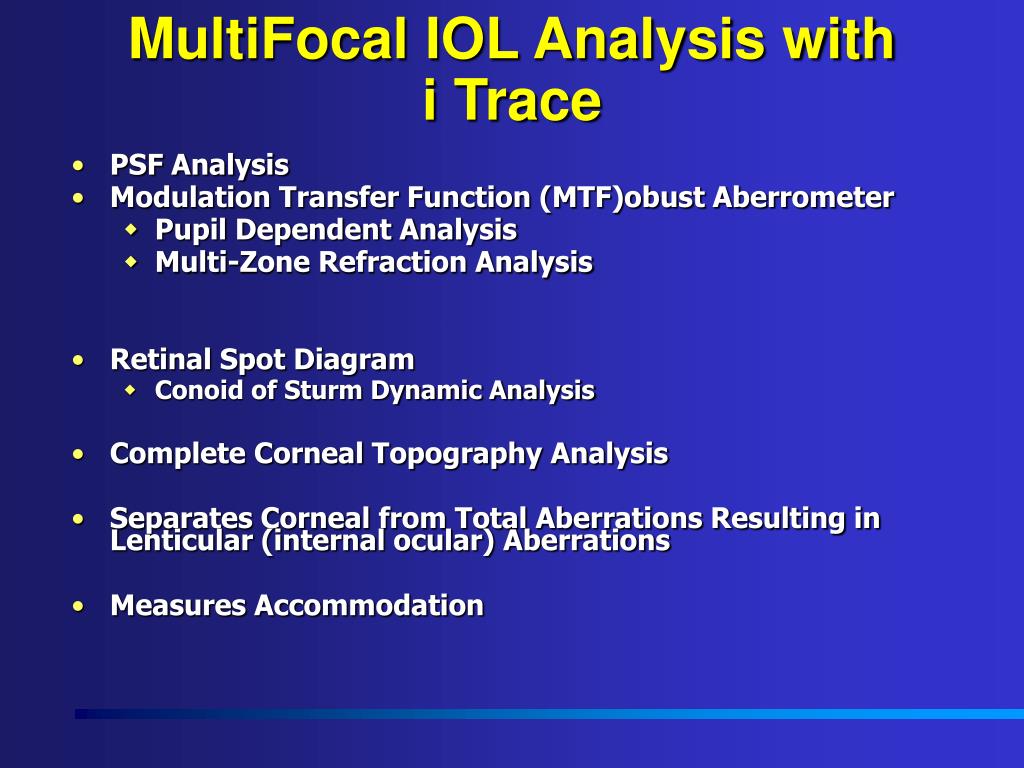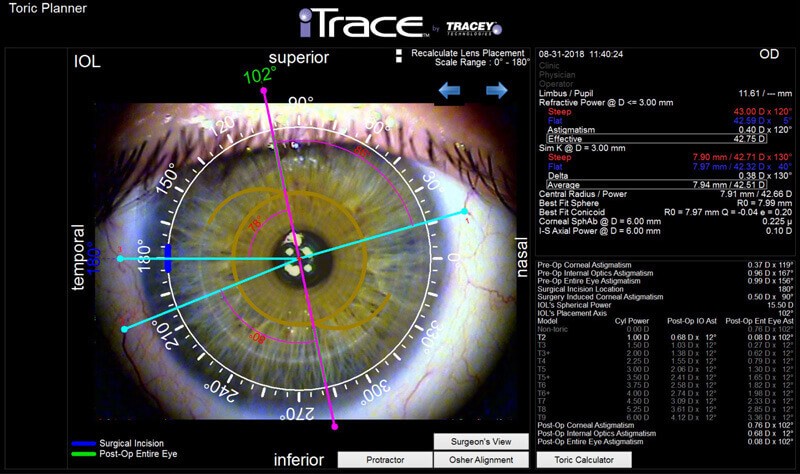
Therefore, the purpose of this study was to evaluate the comparability and interchangeability of astigmatism measurements obtained using the three commonly used clinical devices.īland–Altman analysis revealed good agreement among IOLMaster, iTrace, and Pentacam. Different keratometry and corneal topography devices are important for obtaining precise corneal astigmatism vector values. All toric IOL calculators require accurate preoperative measurements of corneal astigmatism to decide the final toric IOL power and the meridian of IOL alignment.

Proper patient selection and precise measurement of corneal astigmatism are two key factors in toric IOL cataract surgery. The secondary aim was to evaluate (1) the interchangeability of corneal astigmatism values centered on the corneal vertex and pupil by using Pentacam and (2) the interchangeability of corneal astigmatism values between iTrace simulated values and corresponding wavefront values by using iTrace. Therefore, the primary purpose of this study was to investigate the agreement among IOLMaster, Pentacam, and iTrace with respect to corneal astigmatism measurements. Ĭomparing the corneal astigmatism values obtained using different devices on the same eye can provide clues to understanding the trends of current corneal power measurement systems. Moreover, it can provide the wavefront astigmatism value of the cornea, which is recommended for toric IOL calculation via the HOYA iTrace Surgical Workstation, by projecting a bundle of rays parallel to the device axis into the eye by using a laser ray-tracing method. ITrace ray-tracing aberrometry (Tracey™ Technologies, Texas, USA), based on corneal topography, can provide simulated keratometry (SimK) and astigmatism data with a diameter of 3.0 mm centered on the corneal vertex. A few studies have compared keratometry and astigmatism values (centered on the corneal vertex) measured using IOLMaster versus Pentacam, but have reported controversial results, especially about corneal astigmatism measurement. Anterior corneal astigmatism data, as a computerized value focused on the anterior 3.0 mm of the cornea, can be centered on the corneal vertex or pupil. It also can image and perform automated measurement of the anterior and posterior corneal surfaces. The Pentacam Scheimpflug imaging system (OCULUS, Wetzlar, Germany) can capture 25 to 50 images by rotating 360° in one examination. Previous studies have also demonstrated that the astigmatism data obtained using IOLMaster provide good outcomes when used for toric IOL selection. Some authors even considered it the gold standard for assessing new topographers or keratometers.

IOLMaster 500 (Carl Zeiss Meditec, Germany), based on partial coherence interferometry, measures anterior corneal astigmatism and curvature by analyzing the real position of each pair of reflection spots (six spots of light arranged in a hexagonal pattern) from the anterior surface of the cornea with a diameter ring of around 2.3 to 2.5 mm. The potential measurement difference and different IOL toricity calculation formulas may cause under- or overcorrection of corneal astigmatism postoperatively. Different types of keratometers may offer different astigmatism values, which might provide different toricity choices for toric IOLs. Moreover, effective correction of preexisting corneal astigmatism depends greatly on its accurate preoperative measurement.Īs a standard device for corneal astigmatism measurement, the keratometer is widely used in ophthalmic clinics. Precise assessment of preoperative corneal astigmatism plays an important role in choosing the intraocular lens (IOL) type (toric IOL or not), clear corneal incision location (at the steepest axis or not), and peripheral corneal relaxing incisions for patients with cataract. Preoperative corneal astigmatism greater than 0.5 diopters (D) should be considered for correction to gain clearer vision in case of cataract surgery.


 0 kommentar(er)
0 kommentar(er)
